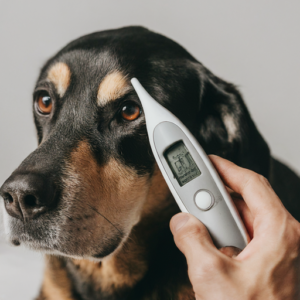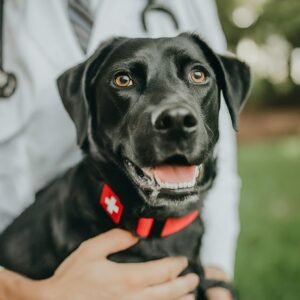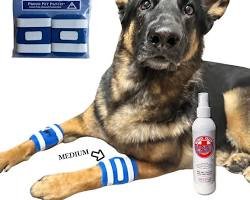Pet dogs first aid
Pet medical aid is critical information for pet people, pointed toward giving prompt attention during a crisis until proficient veterinary assistance can be acquired. Here are a few fundamental rules to remember:

Pet dogs first aid
1. Preparatdrafts:
Medical aid Kit:
Keep a pet-explicit emergency treatment unit that incorporates things like dressing, non-stick wraps, sticky tape, scissors, tweezers, saline arrangement, dispensable gloves, a computerized thermometer, and a cover.
Crisis Contacts:
Have contact data for your veterinarian, a 24-hour crisis veterinary center, and toxin control.
2. Common Situations:
Cuts and Scratches:
Clean the injury with saline arrangement or gentle cleanser and water, apply a disinfectant, and cover with a non-stick wrap. Watch for indications of disease.
Choking:
Be wary, as a stifling pet is probably going to battle and possibly chomp. Investigate the mouth for noticeable articles and eliminate if conceivable. On the off chance that you can’t eliminate the item effectively, you might have to play out a changed Heimlich move or look for guaranteed veterinary consideration
Poisoning:
Side effects might incorporate spewing, loose bowels, seizures, and laziness. Assuming that you suspect harming, contact your vet or toxic substance control right away. Try not to incite heaving except if educated by an expert.

Pet dogs first aid
Heatstroke:
Move your pet to a cool region right away. Apply cool (not cold) water all around their body and permit them to drink little

Pet dogs first aid
You’ve provided an excellent of the summary of the importance of pet first aid! Here are some additional points to consider:
Preparation:
Medications:
Consult your veterinarian about any medications your pet might need in an emergency, such as anti-diarrheal medication for mild cases.
Training: Consider taking a pet first aid course to learn proper techniques for handling emergencies.
Pet dogs first aid
Common Situations:
Bleeding:
Apply gentle pressure with a clean cloth or gauze pad to control minor bleeding.
Burns: For minor burns, cool the area with cool water for 10-15 minutes. Avoid using ointments or butter.
Diarrhea: Withhold food for a few hours but offer small amounts of water frequently.
Shock:
Signs include pale gums, weakness, and rapid breathing. Keep your pet warm and quiet and seek veterinary attention immediately.
Remember:
Stay Calm:
A calm pet parent can make a big difference in an emergency.
Observe: Take note of your pet’s symptoms to help the veterinarian in D diagnosis 
Seek Veterinary Attention:
While first aid can provide temporary relief, it’s crucial to seek professional veterinary help as soon as possible.
By being prepared and knowing these basic steps, you can give your pet the best chance of recovery in an emergency.
Knowing some fundamental dog first aid can be a lifesaver in emergencies. Below are key pointers:
Keep Calm:
Dogs pick up on your vibes. Staying composed helps you assess the situation and act appropriately.
Assess:
Before jumping in, check your dog’s responsiveness, breathing, and any visible injuries.
Handle with Care:
Injured dogs may lash out. Approach them cautiously and, if needed, use a muzzle without obstructing their breathing.
Reach Out:
For serious injuries, get in touch with your vet or an emergency animal clinic ASAP.
Stop Bleeding:
Apply pressure to wounds using clean materials. Elevate if possible. For severe bleeding, use a tourniquet, but loosen it periodically to prevent tissue damage.
Fix Fractures:
Keep the dog still to avoid worsening any breaks. If available, use a splint with care.
Tackle Breathing Issues:
Clear airways and, if necessary, perform CPR as per dog-specific guidelines.
Combat Shock:
Keep your dog warm and watch for signs like pale gums or shallow breathing.
Handle Poisoning:
If you suspect poisoning, contact your vet or a pet poison hotline immediately. Don’t induce vomiting unless directed.
Deal with Heatstroke
Cool your dog down and seek vet help if they’re overheating.
Manage Seizures:
Clear the area to prevent injury and cushion your dog’s head. Note the seizure duration and inform your vet.
Transport Safely:
Use a secure carrier or stretcher to minimize movement and support your dog’s head and neck.
Remember, these tips are general; seek professional help when your dog is injured or unwell. Consider a pet first aid course for more advanced skills and confidence in emergencies.
How to first aid a dog injury
Administering first aid to a dog with an injury is crucial to prevent further harm and to stabilize the animal until you can get professional veterinary care. Here’s a step-by-step guide on how to manage this situation:
1. Ensure Safety
– Before approaching the injured dog, ensure the environment is safe for both you and the animal.
– Use caution, as injured dogs can be frightened and may bite out of fear or pain.
2. Approach Calmly
– Speak to the dog in a calm, soothing voice.
– If the dog shows signs of aggression, consider using a muzzle or, if not available, a makeshift one using a bandage, scarf, or tie (if it’s safe to do so).
3. Assess the Situation
– Look for visible signs of injury such as bleeding, limping, or broken bones.
– Be careful not to cause further pain or distress while examining the dog.
4. Stop the Bleeding
– If there is bleeding, use a clean cloth or gauze and apply gentle pressure to the wound.
– If bleeding is severe and does not stop, apply a bandage to keep pressure on the wound and change it frequently. 5. Manage Shock
– Symptoms of shock can include a rapid pulse, shallow breathing, weak pulse, and lethargy.
– Keep the dog calm and warm by covering them with a blanket.
– Elevate the dog’s hindquarters slightly if it does not cause them pain.
6. Immobilize Any Fractures
– Try to immobilize the injured area if you suspect a fracture. Use a makeshift splint only if you need to move the dog and doing so will not cause pain.
– Avoid trying to reset the bone.
7. Handle Specific Injuries
– Cuts and Scrapes:
Clean with mild soap and water. Apply an antiseptic cream and cover with a sterile bandage.
– Burns:
Rinse the affected area with cool (not cold) water, then gently apply a cool compress. Do not apply ointments unless directed by a vet.
– Eye Injuries: Avoid touching or rinsing the eye. Cover it with a clean, damp cloth and seek veterinary care immediately.
8. Transport to a Veterinarian
– Transport the dog carefully to avoid causing further injury. Use a stretcher or board if available, especially for spinal injuries or fractures.
– If the dog can walk, support them as needed while keeping them calm and quiet.
9. Follow-Up
– Even if the dog appears fine after initial first aid, a veterinary check-up is crucial. Internal injuries are not always immediately apparent.
Prepare a First Aid Kit
– Prepare a pet-specific first aid kit that includes items like gauze, bandages, antiseptic, saline solution, a thermometer, tweezers, scissors, and a muzzle.
Conclusion
Always prioritize safety and seek professional veterinary care







1 thought on “Pet dogs first aid”